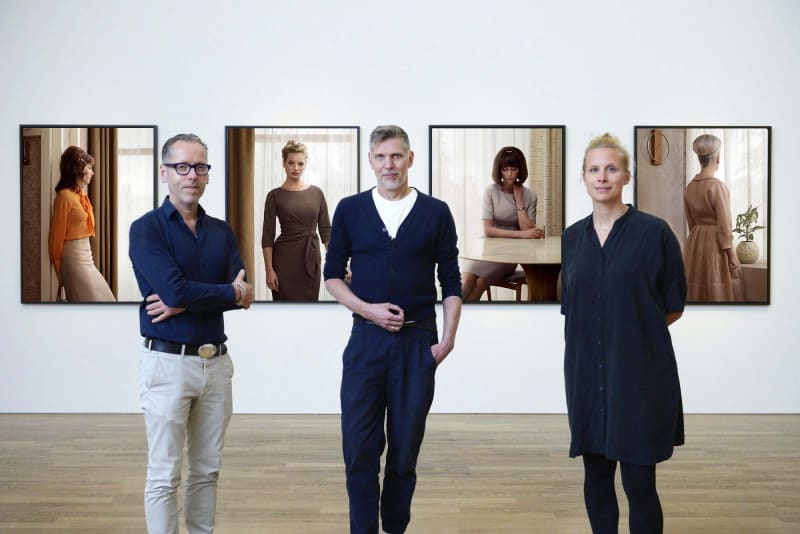The Kunsthalle München is now staging the first, large-scale retrospective dedicated to Erwin Olaf's oeuvre in Germany. Without adhering to any strict chronology, selected photographs, videos, sculptures and multimedia installations from a career spanning almost forty years trace Olaf's artistic development from analogue to digital techniques, from the rebellious photojournalist of the 1980s to the sophisticated storyteller of the 2000s.
STAGED WORLDS
Erwin Olaf is a master of the staged photograph. He collaborates with set designers and make-up artists, among others, to construct his series. The separate worlds he creates look confusingly like our own mundane world, but are enigmatic nonetheless. Behind their flawlessly graphic aesthetics, borrowed from the film and advertising industries, they explore themes such as self-determination, equal rights and democracy. Olaf consciously leaves the narratives of his works open to interpretation. It is up to the audience to become more receptive to these allusions and fill the empty spaces with their own associations and conclusions.
BETWEEN POLITICS AND POETRY
Olaf's deep-seated interest in politics and society is the recurring theme throughout his oeuvre. Never one to shy away from controversy, he stops at nothing in his wholehearted commitment to a more tolerant society. Particularly in his early work, he made a point of using provocation to this end. He also makes reference to polarizing subjects of social debate, climate change, the refugee crisis or the COVID-19 pandemic, in his current work. Since the 2000s, however, the artist has changed down a gear , focussing instead on feelings and moods, such as the moment of acute sorrow after receiving terrible news (Grief, 2007) or the uncertain limbo of marking time (Waiting, 2014).
PAINTING AS INSPIRATION
Even in his early work, Olaf took his inspiration from paintings by Old Masters, like Rembrandt's self-portraits (Ladies Hats, 1985-2020). His latest series, Im Wald (2020), which he shot in the Bavarian and Austrian Alps especially for the exhibition in the Kunsthalle München, was also modelled on painting. Above all, he took his cue from 19th-century artists such as the romantic Caspar David Friedrich, the symbolist Arnold Böcklin and the Munich star painter Franz von Lenbach. Thanks to these borrowings and his unusually ingenious lighting, Olaf's photographs take on an almost painterly quality themselves at times.
BETWEEN FACT AND FICTION
Exploring the relationship between fact and fiction is still a central feature of Olaf's artistic oeuvre to this day. Since the early 2000s, he has taken advantage of the possibilities offered by digital image processing. In his series, Royal Blood (2000), he staged his models as famous victims - of accidents and assassinations - through world history, from Sissi to Princess Diana. The pictures reveal the scope of visual manipulation in a striking way. What do we see and how are we deceived into this perception? This is a fundamental issue in Olaf's oeuvre, in which he invariably challenges the power of images in our society.

